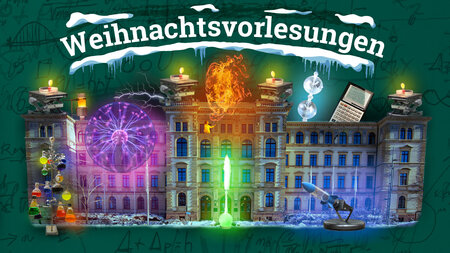Erika meets ChatGPT
a project by Karola Köpferl and Dr. Albrecht Kurze
Introduction
The global exchange of information and knowledge through digital networks, enabled by computers and the Internet, is a defining element of modern society (Seefried, 2024). This progress builds on centuries of communication culture and technological progress (Technische Sammlungen Dresden, 2000). Writing and text production have become an essential part of the human heritage, from medieval monastic desks to remote digital nomads. Throughout history, text compression and faster dissemination of information have driven change. Gutenberg's printing press in the 15th century revolutionised book production (Lehmann-Haupt, 2024), and the typewriter in the late 19th century increased paper consumption and text density (Technische Sammlungen Dresden, 2000). The 20th century saw further acceleration through computers and printing technologies.
AI chatbots date back to the 1950s (Eliza Archaeology Project, 2007). However, the release of ChatGPT by OpenAI in 2022 (Heaven, 2023; Perlman, 2022) brought AI into the public consciousness, demonstrating its ability to generate complex text almost instantly.
ChatGPT and similar models have reshaped communication, producing vast amounts of text every day - enough to reach the moon if printed. This surge of information raises pressing questions about the social and cultural implications of AI (Rosa, 2005):
- How do people engage with AI and large language models (LLMs)?
- What are the social implications of accelerating information flows?
Hacking the Erika typewriter
 To explore these questions, we 'hacked' a 40-year-old Erika electronic typewriter. This project drew on open source and maker communities (Wahl, 2023), as well as decades-old data sheets from East German office technology enthusiasts. Our goal is to transform the Erika S 3004 electronic typewriter into a functional but very unexpected AI interface, bridging past and present communication tools.
To explore these questions, we 'hacked' a 40-year-old Erika electronic typewriter. This project drew on open source and maker communities (Wahl, 2023), as well as decades-old data sheets from East German office technology enthusiasts. Our goal is to transform the Erika S 3004 electronic typewriter into a functional but very unexpected AI interface, bridging past and present communication tools.
The typewriter, connected to an ESP32 microcontroller, serves as a paper-based AI interface.
The typewriter was transformed into a "KI typewriter" in the following way: The serial interface of the typewriter was used as a printer in the late 1980s. (Pohlers, 2005) An ESP32 microcontroller is connected to it with six cables, including the serial communication, the flow control and the power supply of the microcontroller. This is connected to the Internet via WLAN, uses the characters typed on the typewriter as input for a prompt, sends the prompt as request to an LLM (Open AI ChatGPT-3.5-turbo/ChatGPT4.0-turbo Mixtral 8x7b and Llama 2.5/3), receives the answer and sends it to the typewriter for printing.
Why an Erika typewriter?
Manufactured in Saxony and Thuringia, the Erika became Germany's most popular typewriter, with over eight million units sold. From mechanical to electronic models, Erika typewriters dominated offices and homes until the early 1990s. The Erika S 3004 electronic, manufactured by VEB Robotron/Optima, was considered the 'IBM' of East Germany. 

Renowned for its durability and print quality, the S 3004 featured daisy wheel printing, memory functions and a correction key. Its tactile feedback appealed to typists and writers who preferred it to modern keyboards.
Familiar to many (East) Germans over 40, Erika typewriters were a staple in schools and workplaces. Sold internationally to earn foreign currency, they even appeared in Western catalogues. Powered by an 8-bit Z80 CPU clone, the Erika S 3004 offered PC connectivity and outperformed dot-matrix printers. However, the limited access to PCs in East Germany limited widespread adoption.
Research with an Erika typewriter
 We frequently present the "AI typewriter" at public events and have collected data (observations, interviews and the typed prompts and answers themselves) from almost 1,200 uses by participants of all ages.
We frequently present the "AI typewriter" at public events and have collected data (observations, interviews and the typed prompts and answers themselves) from almost 1,200 uses by participants of all ages.
The 'Erika' project offers a practical approach and thus opens up a dialogue about the AI hype. It encourages dialogue about the development of the technology and its impact on our lives, opening up discussions about how we deal with the increasing speed and volume of information and what role AI should play in our everyday lives.
The reactions of some users to the AI typewriter show that there is great interest in the ethical and practical implications of using AI. This concerns issues of data security, transparency of AI algorithms, and responsibility for development and use. The use of nostalgic technology also opens up an additional dimension: connecting young and old on these issues and aspects.
See also:
 Köpferl, Karola und Kurze, Albrecht: "Human-Chatbot Interaction: When ChatGPT meets an old Typewriter." Proceedings of the 21th International Conference on Culture and Computer Science (KUI ’24). ACM, New York, NY, USA. https://tuc.cloud/index.php/s/in3fNx9FDFrjNjT (Pre-Print)
Köpferl, Karola und Kurze, Albrecht: "Human-Chatbot Interaction: When ChatGPT meets an old Typewriter." Proceedings of the 21th International Conference on Culture and Computer Science (KUI ’24). ACM, New York, NY, USA. https://tuc.cloud/index.php/s/in3fNx9FDFrjNjT (Pre-Print)- 8.000 Gäste tauchten in die spannende Welt der Wissenschaft ein: https://www.tu-chemnitz.de/tu/pressestelle/aktuell/12349
-
Leistungsschau der Wissenschaften: Hier tippt die gute alte "Erika" jetzt mit KI: https://www.tag24.de/dresden/dresden-veranstaltungen/leistungsschau-der-wissenschaften-hier-tippt-die-gute-alte-erika-jetzt-mit-ki-3123264
-
Erika setzt jetzt selber Zeichen: https://media.ccc.de/v/clt24-168-erika-setzt-jetzt-selber-zeichen
Acknowledgements
This research is supported by the Junior Professorship of Sociology with Specialization in Technology and the ailab of Chemnitz University of Technology. We also thank the Chaostreff Chemnitz and its members for their support.
References
-
Eliza Archaeology Project. (2024). ELIZA Archaeology Project. https://sites.google.com/view/elizaarchaeology/home
-
Heaven, W. D. (2023). Artificial Intelligence: ChatGPT is everywhere. Here’s where it came from. OpenAI’s breakout hit was an overnight sensation—But it is built on decades of research. Retrieved May 30, 2024, from https://www.technologyreview.com/2023/02/08/1068068/chatgpt-is-everywhere-heres-where-it-came-from/
-
Heinz Nixdorf MuseumsForum. (2024). Kulturgeschichte des Büros. American Office. https://www.hnf.de/dauerausstellung/ausstellungsbereiche/kulturgeschichte-des-bueros/american-office-um-1900.html
-
Lehmann-Haupt, H. E. (2024). Johannes Gutenberg. German printer. https://www.britannica.com/biography/Johannes-Gutenberg
-
Perlman, A. (2022). The Implications of ChatGPT for Legal Services and Society. SSRN Electronic Journal. https://doi.org/10.2139/ssrn.4294197
-
Pohlers, V. (2015). Erika S 3004. https://hc-ddr.hucki.net/wiki/doku.php/z9001/erweiterungen/s3004
-
Rosa, H. (2005). Beschleunigung die Veränderung der Zeitstrukturen in der Moderne (1. Aufl). Suhrkamp.
-
Seefried, E. (2024). Steuerung der Informationsgesellschaft? Digitale Ordnungspolitik in zeithistorischer Perspektive. List Forum für Wirtschafts- und Finanzpolitik, 50(1–2), 31–50. https://doi.org/10.1007/s41025-023-00256-z
-
Technische Sammlungen Dresden. Denk, Maschine! Typewriter, Elektronengehirne, künstliche Intelligenz. Retrieved May 30, 2024, from https://www.tsd.de/de/mm/ausstellungen/denk-maschine
-
Wahl, D. (2023). KI-Projekt: ChatGPT auf einer Schreibmaschine mit ESP32 umsetzen. https://www.heise.de/ratgeber/KI-Projekt-ChatGPT-auf-einer-Schreibmaschine-mit-ESP32-umsetzen-7545547





